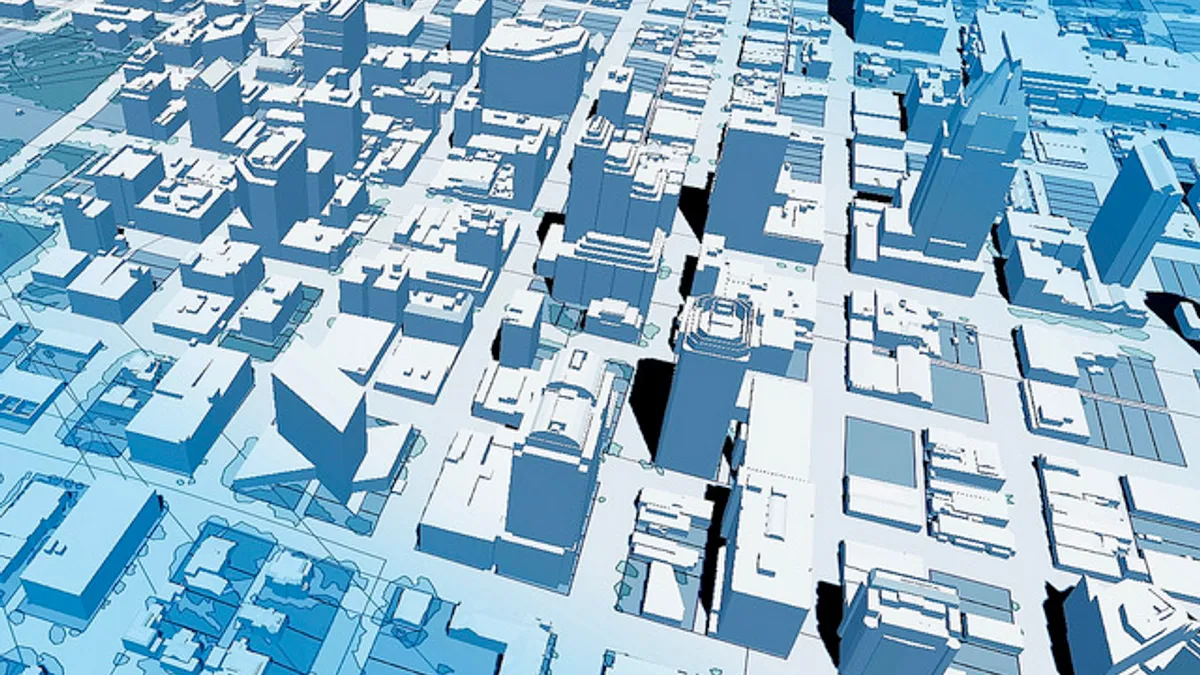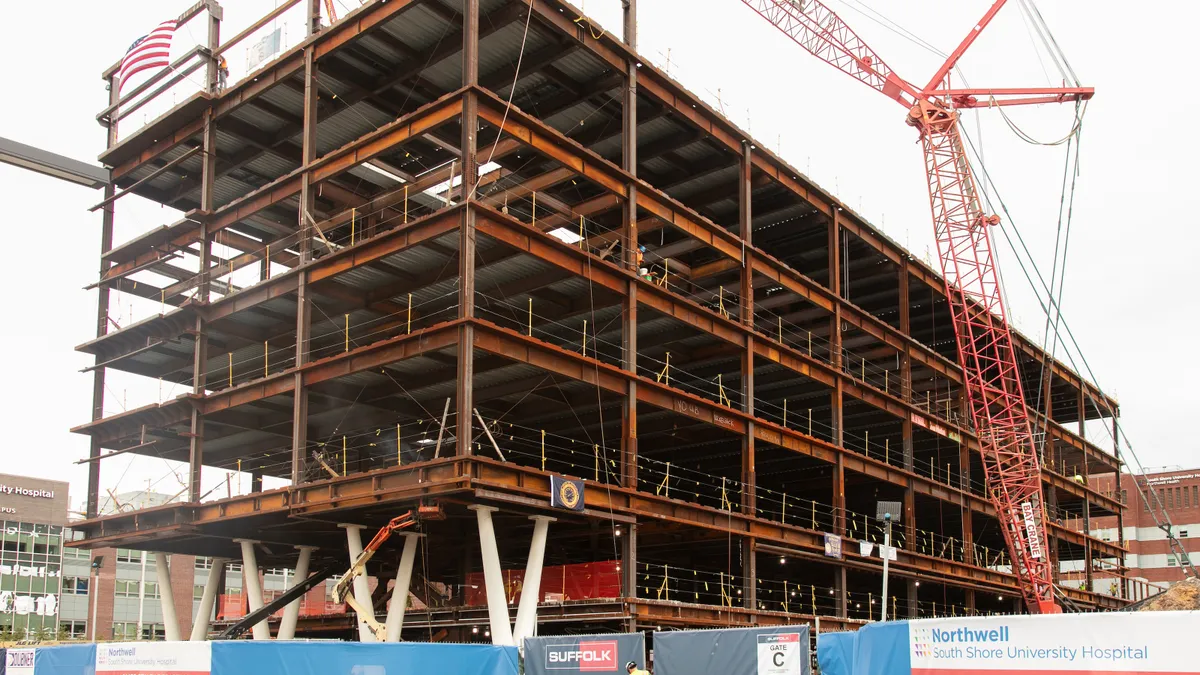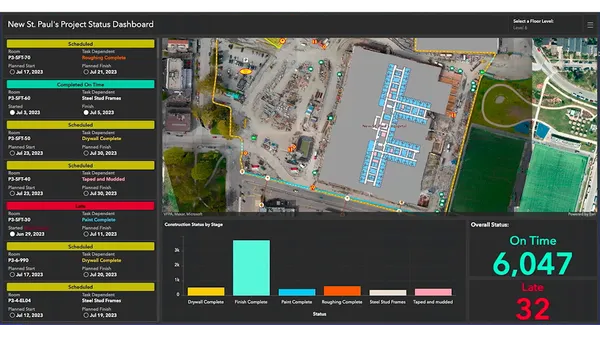Imagine donning a headset and taking a virtual stroll through a fully designed space, using a wand to make at-will changes to furnishings, windows and other elements, even peeling back finished walls to survey the underlying structure without leaving a mark behind. It’s the stuff of Hollywood movies — or at least it was before gaming technology merged with building information modeling (BIM) to create such imagery.
The marriage of the two technologies is changing the way construction professionals and designers do business with customers and with each other. And now, it seems the combination is on the verge of changing the industry as a whole.
Building on innovation
The proliferation of BIM itself is a tremendous leap forward from previous construction modeling and graphics processes — such as foam core models — commonly used in the construction industry that were predominant up until about a a decade ago. In that relatively short period of time, and according to a recent Dodge Data & Analytics report, written in association with AEC software company Bentley Systems, BIM has provided construction companies with significant benefits, such as improved productivity and reduced costs, as well as given them a competitive advantage.
Globally, BIM is predicted to grow to $11.54 billion by 2022, and software companies and the industry’s BIM experts are pushing the boundaries of the technology's possibilities with gaming engines, also referred to as real-time engines, to create as rich of a virtual experience as possible.
For Amr Raafat, virtual construction planner at Shawmut Design and Construction, it’s all about "a wow factor."
Raafat said he has used a variety of platforms in the past, in addition to drafting software like Autodesk’s Revit, to achieve an impressive end result. However, now, "with gaming engine software, you can do basically anything in one interface," he said.
Raafat added, "That’s big, because you have this great flexibility." He said that, much like a video game, the technology allows construction companies to tell a story.
Rick Davis, design visualization industry manager at Autodesk, said the company's BIM products, including Revit and 3ds Max, already make it possible for users to create a more textured and appealing rendering, which allows "people to really understand what that design's going to look like." Add to that a gaming engine like Autodesk’s Stingray, "and you feel like you’re in the space," Davis said.
According to Dareen Salama — BIM manager and assistant project controls manager at construction firm STV, Inc., and co-chair of the emerging technologies committee for the Construction Management Association of America — the construction industry, like any other, is always looking for innovative ways to enhance collaboration, and gaming tech provides an opportunity to do that.
Amir Tasbihi, senior BIM specialist at STV and also a member of CMAA’s emerging technologies committee, said it’s interesting to see the merging of BIM with the responsiveness, quality and ease of use that gaming technology brings to the table.
"This is why," he said, "companies have started to use BIM for engineering in all stages of the project lifecycle and use game engines to publish the data on multiple platforms — to provide easy access to the data."
Testing the waters
Davis said the Stingray experience, complete with the aforementioned wand and headset, makes it possible "to bring BIM data to life. It’s a larger concept that we call live design, where, through software, you can bring your design to life in every possible way before anything is built in the physical world."
Davis uses the Stingray demo, based on a model of San Francisco, as an example of BIM possibilities of adding gaming tech into the mix. "We drop you into the city of San Francisco as a giant, where you see the city down at your feet." Godzilla jokes aside, Davis said the user can either bring whole city blocks up to waist level or bend down to get a closer view of the fully animated city.
"There are cars driving around the city, the ambient noise of a city, and you have wind blowing by you. So it really is this fully immersive experience," Davis said. "You can look 360 degrees in every direction, and it looks like a mini-model of the city of San Francisco."
Davis said that depending on which program a design was initially created in, customers and designers can make changes on the fly in Stingray and immediately see the results.
"It also allows the architects to get in and understand the space before the customer has ever even seen it," Davis said. "The advantage there is that the architect knows what they're delivering, and they know what they're selling, and, of course, the customer knows just as much."
Not ready for the masses?
However, with such a feature-rich technology, are the gaming-influenced features of BIM out of reach for the average construction company that doesn’t have the resources of firms like STV and Shawmut?
"I am a firm believer," Salama said, "that there are simple steps any company can take to start their innovation process without having a great amount of resources. Within STV, the integration of gaming and BIM started with one person being innovative in their free time, which then turned into a service that the company offers."
Tasbihi added, "Since the convergence of BIM and gaming is a relatively recent phenomenon, the tooling to support it is not there yet. This means there is some customization that needs to happen to have a decent translation, but there are a lot of things happening in this market as we speak."
He said that, for now, that new quality of the convergence might limit the integration of gaming to those who have more resources, but said but believes that soon there will be products to bridge the gaps.
There are currently products on the market, Tasbihi said, that will publish BIM models to a game engine without any customization, but many BIM professionals prefer the flexibility that comes with custom processes. Tasbihi said Stingray is an example of industry efforts to bring that flexibility and customization to BIM users in one product.
Costs aside, Raafat said the addition of gaming into BIM enhances the quality of the work that goes into a design throughout the entire process. But, he noted, it has also raised customer expectations and has increased the sense of competition among construction companies.
"It's like a race," Raafat said. "Everybody's trying to do it because when you go to the interview, the client expectations are higher, so I think everybody will go there at some point. It's just a matter of time."






















